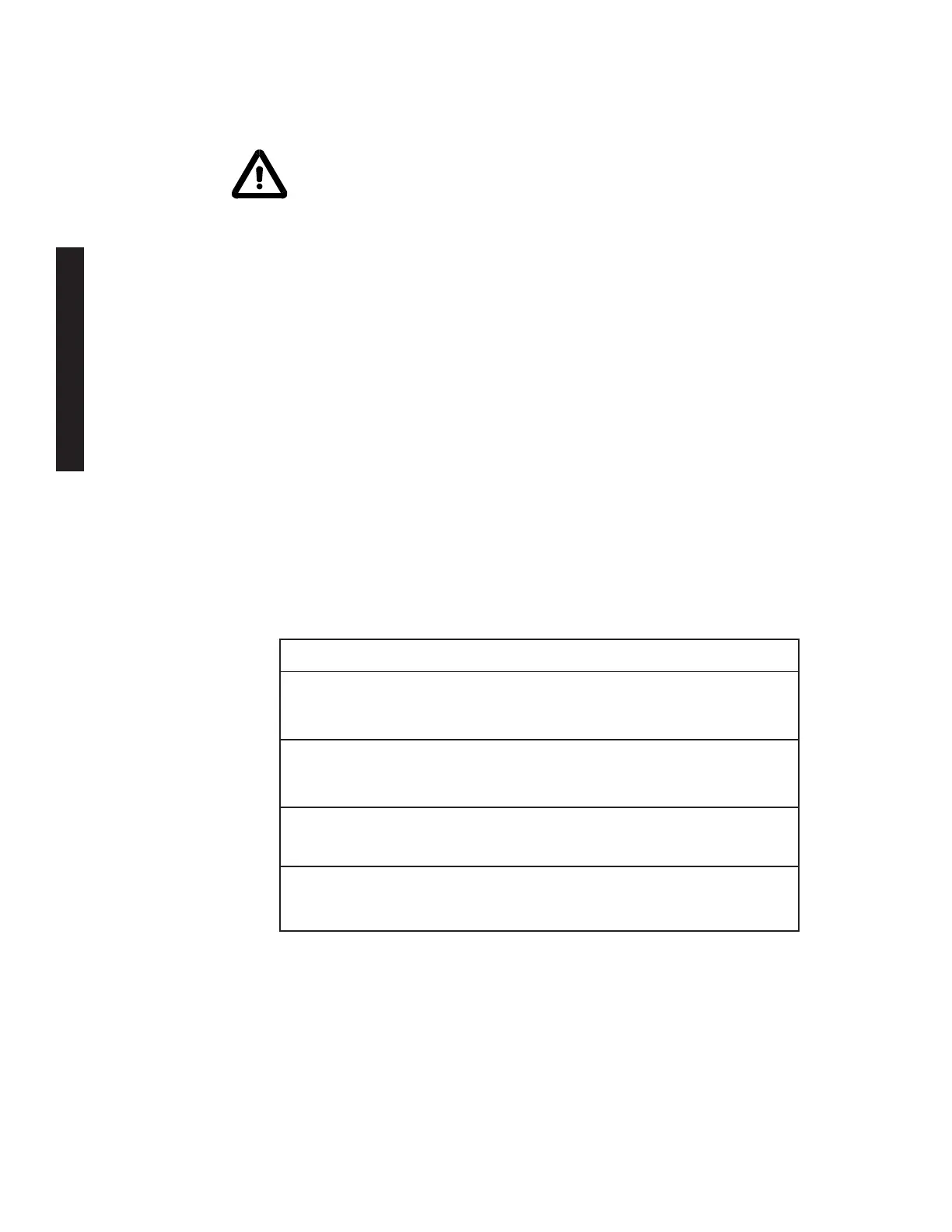- 12 -
Electrical
Requirements
The unit construction provides protection against the risk of electrical
shock by grounding appropriate metal parts. The protection may not
function unless the power cord is connected to a properly grounded
outlet. It is the user's responsibility to assure a proper ground connec-
tion is provided.
We recommend the use of a dedicated outlet.
Refer to the serial number label on the rear of the unit to identify the specific
electrical requirements of your unit. Ensure the voltage of the power source
meets the specified voltage, ±10%.
The RTE-7 is not designed to be used beyond the voltage range or have
momentary power interruptions. Install an un-interruptible power supply or a
line loss detection method.
All units are:
Pollution Category 2
Overcurrent Protection II
The following power options are available:
Unit Amps
1
Breaker Power Inlet
RTE 7 115/60/1 12 15A IEC 320-C-13
100/50-60/1 12 15A IEC 320-C-13
230/50/1 12 15A IEC 320-C-19
RTE 10 115/60/1 12 15A IEC 320-C-13
100/50-60/1 12 15A IEC 320-C-13
230/50/1 12 15A IEC 320-C-19
RTE 17 115/60/1 16 20A IEC 320-C-19
100/50-60/1 16 20A IEC 320-C-19
230/50/1 12 15A IEC 320-C-19
RTE 740 115/60/1 16 20A IEC 320-C-19
100/50-60/1 16 20A IEC 320-C-19
230/50/1 12 15A IEC 320-C-19
Installation and Operation
1. Average Amp draw.
